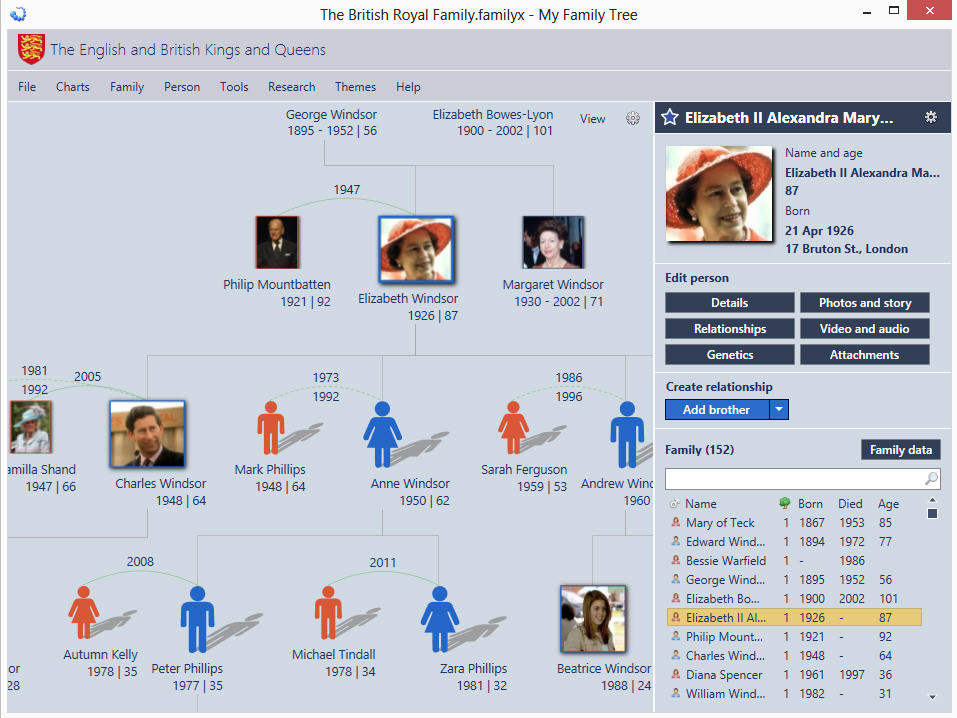Record every detail of your family history with My Family Tree
 Building your family tree on a website like Ancestry.com has plenty of advantages. You'll get easy access to a host of records; you can use these to locate and add missing family members in just a few clicks, and it’s simple to share your work with anyone else who might be interested.
Building your family tree on a website like Ancestry.com has plenty of advantages. You'll get easy access to a host of records; you can use these to locate and add missing family members in just a few clicks, and it’s simple to share your work with anyone else who might be interested.
These sites may not be as configurable as you’d like, though. View and reporting options are often limited, printing is generally poor, and you might prefer to keep all those personal details to yourself, anyway. Sounds familiar? Then you may want to install a local genealogy application, instead, and the free Windows-based My Family Tree is one of the best options around.
After a quick and hassle-free installation, we started by testing the program’s GEDCOM support, which makes it quick and easy to import any details you might have already. We saved an Ancestry.com tree (Tree Pages > Tree Settings > Export tree), and My Family Tree imported the file imported correctly and in full, no problems at all.
It’s then straightforward to add individuals, and a host of details on them: relationships, photos and stories, video, audio, general attachments, even genetics.
There’s plenty of depth to these options, too. An extensive Details section allows you to add name, birth and death dates, nationality, religion, social security number, title, education, description, confirmation date, first communion and more. Relationships are reasonably flexible: children can be "natural", "adopted" or "foster", a spouse can be "current" or "former", an "Unrelated" option allows you to connect friends, witnesses or others you might need to reference later. Even a basic feature like adding an image manages to impress, with support for scanners, one or two very simple editing options ("Rotate", "Sepia"), printing, slideshows and more.
The core family tree view is very configurable. You might choose to show all generations, just immediate family, maybe those born after a particular date; there are options to hide descendants, ancestors, siblings and more; you can show or hide dates, photos, genders and so on; there are even built-in themes to change the background and color scheme.
A host of other views are just a click away. There’s an ancestors tree; an interactive timeline; lists of sources, photos, stories and more, and handy pages of statistics and family details. (If you’d like a count of the surnames in your family tree, say, or a graph showing the distribution of family ages at death then you’ll find them here.)

A set of useful reports provides further ways to analyze your tree, most notably highlighting possible errors: people who’ve lived "too long", have no parents, have duplicate named children, have events after death, and so on.
And the program is rounded off with plenty of small but welcome extras, such as its ability to password-protect your tree and ensure its details remain private.
There are a few very small interface issues. Customizing the current view, say, involves calling up a drop-down menu and selecting or disabling the option you need. You have to click away from the menu to see its effect, though, then recall it if there’s a problem. Presenting the options in a separate pane or dialog box, and updating the tree dynamically as you tweaked a setting would be more straightforward.
It was also slightly annoying to see the program automatically adjust the tree view when we resized the application window, especially as it didn’t always do this in a way we would expect. It’s fine to center the view on the starting person when you launch the tree, but after that, leave positioning to the user (with perhaps a "center" button if someone needs it).
Still, this is absolutely trivial when compared to what you’re getting here. Why is My Family Tree free, with no adware, no marketing hassles, not as much as a Donate button? We’ve no idea, but go grab a copy quickly, before the authors change their mind.
Image credit: Dirk Ercken/Shutterstock
